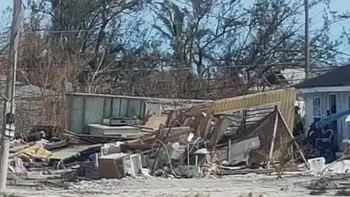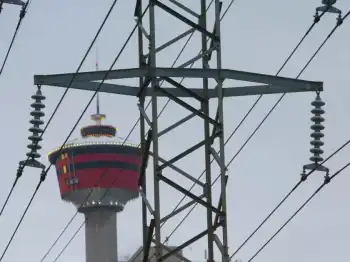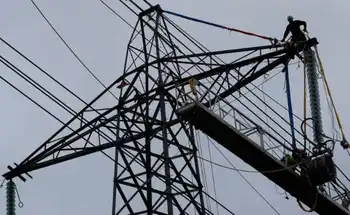Blackouts loom, city warned
TORONTO, ONTARIO - Toronto faces rotating blackouts within the next two years unless urgent action is taken to get new power generators and transmission lines to serve the city.That dire warning is made in a 18-month forecast on the province's power supply released recently.
"Without new facilities, there is a risk of rotating power cuts as early as the summer of 2008 in central Toronto during periods of high demand," said Dave Goulding, head of Ontario's Independent Electricity System Operator, which released the forecast.
While supplies of power are tight across Ontario, the city of Toronto is especially vulnerable for a numbers of reasons, including the shutdown of the Lakeview generating station in Mississauga in April. As well, proposed power projects and new transmission lines for the GTA region have been stalled because of public backlash.
For example, Ontario Power Generation and TransCanada Corp. proposed building a new gas-fired generating station in the portlands area of Toronto's eastern waterfront. But the project has faced opposition from nearby residents.
But decisions on how to address the problems, in both central Toronto and the western part of the GTA, must be made in the New Year, said Goulding. His organization manages the province's power system, balancing demand for electricity against available supply through the wholesale market, and directs the flow of electricity across the transmission system.
Toronto needs as much as 600 megawatts of new power, some of which can be delivered in stages, the organization says. But it must have 250 megawatts — or enough electricity for up to 200,000 homes — of new supply by 2008, the report said.
As it stands now, the wires bringing power into the city can't carry any more electricity.
Overall in Ontario, the organization says conditions across the province have improved slightly, with additions of new sources of power, but there is still not enough for a comfortable cushion during very cold and very hot weather.
The forecast comes less than two weeks after the province received a 1,100-page report from the Ontario Power Authority (OPA), which outlined future energy requirements and called for nuclear power to supply half of the province's electricity needs.
That would require overhauling or replacing all Ontario nuclear reactors at a cost of up to $35 billion, said the report, which also estimated it will cost $83 billion to rebuild Ontario's electricity sector over the next 20 years.
The forecast did note, however, that the situation in Toronto is slightly better now than last summer, when the system teetered on the edge of blackouts, because Pickering Unit 1 came back on line with 515 megawatts, and the Greater Toronto Airports Authority's new cogeneration plant started producing 117 megawatts.
Goulding said the Ontario electricity sector faces significant problems over the next decade as existing nuclear plants reach the end of their life and coal-fired plants are boarded up.
The province needs at least 25,000 megawatts of new supply over the next 15 years, especially since the Liberal government decided to close down all coal-fired power plants by 2009, representing a loss of 7,500 megawatts.
It would take two facilities the size of the Darlington nuclear station to replace the power now being generated by coal-fired plants.
Goulding called for a more efficient process to deal with the numerous power-generating projects that will require regulatory approval in order to proceed.
"The time frame to address these reliability requirements is very tight," he said.
"We need to ensure that proposed projects are properly examined from a public and regulatory point of view, but without the process becoming overly complex and preventing timely implementation."
His organization said market enhancements planned for the summer of 2006, such as buying power 24 hours in advance, will help reduce the likelihood of a repeat of last summer, when high temperatures and drought-like conditions pushed demand to record levels and decreased hydroelectric generating availability.
The IESO says it relied heavily on emergency powers in the summer to maintain reliability and avoid power interruptions.
The agency issued public appeals to consumers to cut back on electricity on 12 separate days, while 5 per cent voltage reductions, known as brownouts, were implemented across the province on two days in August. There were two additional voltage reductions in the GTA.
"This occurred despite good performance and availability of the Ontario generation and transmission facilities and the support from neighbouring markets," according to the forecast.
Toronto relies on supply generated outside the city to meet demand, but the main transmission lines and related facilities carrying this power into the city are already nearing capacity.
The planned Goreway natural gas units in Brampton will substantially reduce risks to reliability, but won't completely remove them, the IESO said.
Related News

Maritime Electric team works on cleanup in Turks and Caicos
TORONTO - Maritime Electric has sent a crew to help in the clean up and power restoration of Turks and Caicos after the Caribbean island was hit by Hurricane Irma.
They arrived earlier this week and are working on removing debris and equipment so when supplies arrive, power can be brought back online.
Fortis Inc., the parent company for Maritime Electric operates a utility in Turks and Caicos.
Kim Griffin, spokesperson for Maritime Electric, said there are over 1000 poles that were brought down by the storm.
"It's really an intense storm recovery," she said. 'Good spirits'
The crew is working with less heavy equipment…




